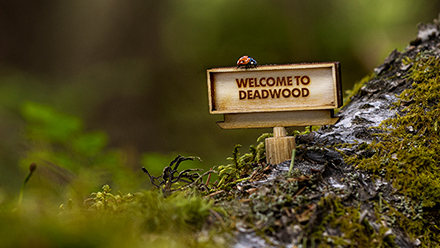UPM is supporting a study by the Natural Resources Institute Finland (Luke) and the University of Helsinki to explore a novel way to boost populations of wood-decaying fungi. Increasing the rare fungi will create new habitats for species living on decaying wood, and thus promote forest biodiversity. Source: Timberbiz
The aim is to increase awareness of biodiversity by launching a campaign where tiny billboards call the smallest creatures of the forest to settle down in an environment where biodiversity is enhanced.
With the campaign UPM wants to show that even the small things can have an impact in the fight against global biodiversity loss.
“Roughly a quarter of species in Finnish forests depend on decaying wood. Therefore, one of the most purposeful actions on our Forest Action Program’s biodiversity action plan is to double the amount of decaying wood in our own forests in Finland,” says Sami Oksa, Director, Global Forest Affairs.
“Endangered animal and plant species are near and dear to many, but quite little attention is paid to fungi and other small organisms. If we can make life better for them, the effects will be felt throughout the entire forest ecosystem.”
UPM has offered its forests in Janakkala, Finland for the Natural Resources Institute Finland (Luke) and the University of Helsinki, to put this unique study in action.
“We have planted mycelia of endangered species of wood-decaying fungi, such as Antrodia piceata or Perenniporia tenuis, on small wooden pegs. The pegs are then inserted into holes drilled in specific trees, some recently felled, and others naturally fallen. We monitor these trees to see if the mycelia manage to grow and spread, eventually producing fruit bodies and spores themselves,” said Reijo Penttilä, a researcher from Luke in charge of the project.
The Luke-led research project is one of the first of its kind and examines transplantation to boost populations of wood-decaying fungi. A pilot experiment, concluded in 2016 in the University of Helsinki, showed promising signs of the method’s viability.
“Seven years after transplantation, three of the seven species planted had already produced fruit bodies, indicating that the method could promote further spread,” Penttilä said.
“The study we’re conducting now is much more extensive, it’s the broadest of its kind in the world. We expect to see initial results later this year.”






